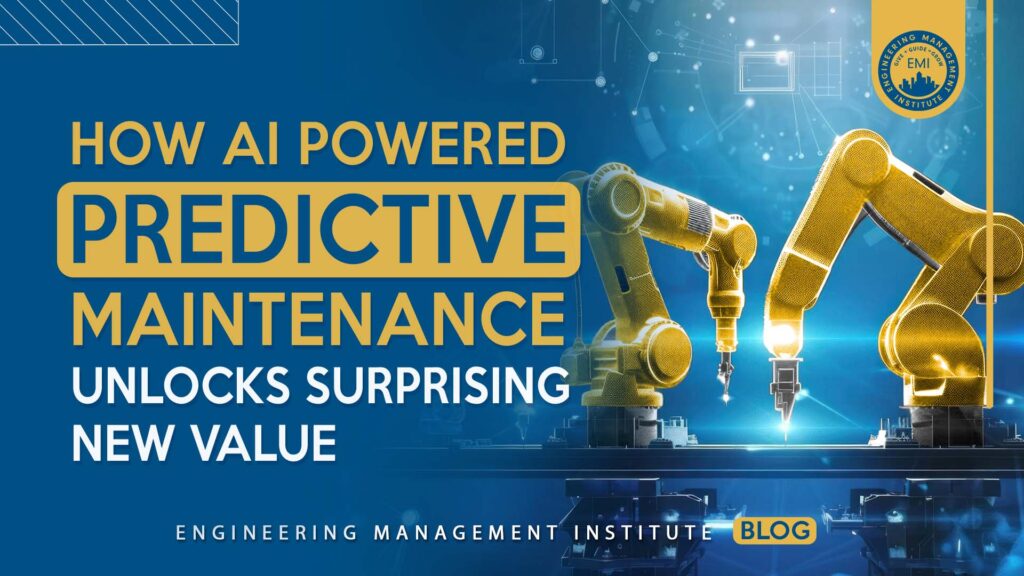There’s something thrilling about watching an AI system accurately predict when a piece of machinery will need maintenance long before it breaks down. That’s AI-powered predictive maintenance for you, transforming the face of infrastructure management as we know it, and it feels like having a crystal ball.
AI and Its Crystal Ball
Alright, picture this: a manufacturing plant running at full tilt, with machines humming in perfect synchronization—until one crucial piece of equipment unexpectedly breaks down. The result? Operational chaos, lost time, wasted resources, and mounting frustration. Now imagine if you’d known days in advance that the machine was heading toward failure. That foresight is the essence of AI powered predictive maintenance.
AI steps into the arena with its uncanny ability to analyze vast amounts of data, detect subtle anomalies, and predict future outcomes. It doesn’t just react to problems, it anticipates them. Think of it like having a superhero ability that lets you “listen” to the machinery as it quietly warns you about its health, the same way a car enthusiast can detect a misaligned engine just by hearing a difference in the hum. This is the beauty of AI; it doesn’t just replace intuition; it supercharges it.
The Heartbeat of Machines
Real-Time Monitoring
Here’s where the magic starts. AI doesn’t work in isolation—it needs eyes and ears on the ground. Sensors embedded into machinery act as its sensory input, collecting real-time data from multiple points. Think of temperature spikes, unusual vibrations, stray noises, or gradual pressure deviations. These variations, imperceptible to our human senses, feed into AI powered predictive maintenance systems like puzzle pieces waiting to be assembled.
If you’ve ever seen a fitness tracker log your heart rate or compare your movement patterns to a baseline, it’s essentially the same concept. The machine’s “normal behavior” becomes its heartbeat, a living, breathing baseline that the system recognizes as stable operations. The second something changes—say, a spike in vibration or overheating—the AI powered predictive maintenance system, sends out alerts, urging engineers to intervene before things spiral.
Why does this matter? This level of granular monitoring minimizes guesswork. Instead of inspecting every piece of equipment like you’re guessing which tire might be leaking air, the system pinpoints the “offbeat rhythm” for you.
Data Analysis and Predictions
Now, let’s discuss how AI processes this avalanche of data. The real beauty lies in machine learning models. These algorithms essentially “learn” what normal looks like and continuously improve their understanding of patterns and anomalies over time. It’s like training a doctor—or maybe a physiotherapist, to predict joint wear based on repetitive strain.
Here’s how it works: an AI powered predictive maintenance system doesn’t just flag immediate issues; it looks deeper into early indicators—those faint, almost invisible signs of deterioration that humans wouldn’t even notice. Maybe the vibrations are slightly irregular, and temperatures increased by just a degree or two over a week—it’s subtle stuff, but to AI? It’s a flashing red light.
What’s incredible is that the system becomes proactive. It might send a notification like, “The gearbox in Machine X showed a 10% increase in vibration frequency over the past three days. The probability of malfunctioning within two weeks is 85%. Recommend replacing soon.” Imagine having this level of prescience for individual machines and entire facilities.
Why This System Works
Let’s ask the tricky question: How does AI know this stuff? It’s not magic—its data science doing the heavy lifting, powered by advanced algorithms for pattern recognition, regression models, and even neural networks. These algorithms gobble up sensor-fed data and compare it against vast historical datasets to spot correlations between early warning signs and real-life failures.
The result? Precise predictions that allow engineers to plan maintenance schedules with pinpoint accuracy. No more losing sleep over unscheduled downtime or relying on “gut feelings” for machine checks.
Think of it sort of like detective work—but for machines. The AI system isn’t piecing together evidence to solve crimes; it’s piecing together data to prevent disasters. From analyzing vibration patterns to cross-referencing them against temperature and operational stress, it works across layers to give you the big picture.
A Story of Revolution
Here’s where it gets personal. Imagine you are part of a team responsible for maintaining a critical infrastructure piece—a bridge in a bustling city. Traditional checks are periodic, often failing to catch issues before they escalate into costly repairs or catastrophic failures.
Now, introduce AI into the scenario. You have sensors providing real-time data about the bridge’s condition, AI algorithms analyzing this data, and predictive alerts when something’s amiss. What was once reactive, fraught with downtime and uncertainty, becomes proactive and precise. Suddenly, you’re not just a maintenance engineer but a guardian of the city’s lifelines, equipped with foresight.
Key Takeaway: The Solution-Driven Approach
This shift towards shift toward AI-powered predictive maintenance isn’t just about avoiding problems; it’s about reimagining how we approach infrastructure management. It empowers us to move from a problem-driven mindset to a solution-driven mindset, focusing on prevention rather than cure.
Adopting predictive maintenance powered by AI doesn’t just change how we maintain; it changes how we think about the lifespan and health of our infrastructure. It promises a future where downtime is an exception, not the norm, and the incredible predictive power of artificial intelligence backs the efficiency and safety of our systems. So, here’s to becoming the guardians of tomorrow’s infrastructure, one predictive alert at a time.
About the Author: Cris Mark Baroro
Cris is currently working in VEED.io as a search engine optimization specialist. He is a tech enthusiast who loves capturing photos and videos. He loves technology and can do video editing, programming, QA system testing, and writing.
We would love to hear any questions you might have or stories you might share on socially responsible engineers and the astonishing ways they impact society.
Please leave your comments, feedback or questions in the section below.









